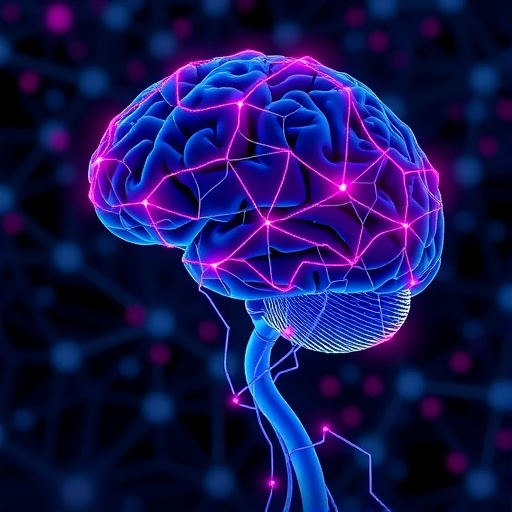In a groundbreaking study poised to reshape our understanding of schizophrenia’s neurobiological underpinnings, researchers have uncovered remarkable disruptions in the functional connectivity of amygdala subregions in patients with first-episode schizophrenia. This research, published in BMC Psychiatry, goes beyond previous investigations that treated the amygdala as a monolithic structure, zeroing in on its intricate subregional networks. The implications of this refined approach are profound, particularly in illuminating the neural basis of anhedonia, a debilitating symptom characterized by the inability to experience pleasure.
Schizophrenia traditionally challenges clinicians and neuroscientists with its complex symptomatology and elusive etiology. Among its many features, anhedonia stands out not only as a critical impairing factor but also as a therapeutic conundrum. Until now, the neurocircuitry contributing to this symptom remained largely speculative. The recent work delves deep into the functional magnetic resonance imaging (fMRI) of 31 individuals experiencing their first episode of schizophrenia, contrasting their brain connectivity patterns with those of 33 healthy controls.
Crucially, the study harnessed resting-state fMRI to explore connectivity at the subregional level within the amygdala, a central hub integral to emotional processing and regulation. By dissecting the amygdala into its distinct centromedial, basolateral, and superficial nuclei, the researchers identified variations in how these subregions communicate with cortical regions. This subregional approach unveiled that patients demonstrated markedly diminished connectivity primarily between the centromedial amygdala (AMY_CM) and several cortical areas, including the frontal, temporal, parietal, and limbic cortices.
The functional connectivity anomalies observed have far-reaching implications, especially for understanding anhedonia’s neural correlates. Of particular note was the positive correlation between anhedonia severity—measured by the Snaith-Hamilton Pleasure Scale—and the altered connectivity between the AMY_CM and regions such as the supplementary motor area (SMA) and the paracentral lobule (PLG). This suggests a disruption in neural circuits traditionally involved not only in emotional response but also in motor planning and execution, hinting at a complex network failure underlying pleasure deficits.
What bolsters the significance of these findings is their robustness even after controlling for the overall severity of clinical symptoms as assessed by the Positive and Negative Syndrome Scale (PANSS). This independence implies that the connectivity aberrations tied to anhedonia may serve as a discrete neurobiological marker, distinguishing it from broader symptom domains in schizophrenia. It propels the field toward targeted biomarker development, which could revolutionize diagnostic precision and individualized treatment strategies.
From a methodological standpoint, the utilization of Gaussian Random Field (GRF) correction to manage multiple comparisons enhances confidence in the reported connectivity differences. Such stringent statistical controls safeguard against false positives, reinforcing that the subregional connectivity patterns in first-episode schizophrenia patients are not statistical artifacts but reflect genuine pathophysiological processes.
Beyond the immediate clinical implications, the study invites a re-examination of the amygdala’s role in schizophrenia. Rather than a uniform dysfunction, the differential connectivity disruptions across subnuclei underscore the complexity of amygdala-cortical interactions. This nuanced view aligns with animal models and postmortem studies revealing heterogeneity within amygdala circuits, advocating for precision in neuroanatomical investigations.
Moreover, the findings suggest avenues for future interventions aimed at modulating specific brain circuits. Neuromodulation techniques such as transcranial magnetic stimulation (TMS) targeting the SMA or related cortical hubs connected to the AMY_CM could potentially ameliorate anhedonia symptoms. Pharmacological strategies that fine-tune neurotransmission within these circuits might also emerge, underscoring the translational value of this work.
The focus on drug-naïve patients within the cohort adds another layer of clarity, minimizing confounds related to medication effects on brain function. This approach lends credence to the view that functional dysconnectivity is an intrinsic feature of schizophrenia’s early pathology rather than a consequence of treatment or chronic illness progression.
These revelations also resonate with broader neuropsychiatric paradigms emphasizing circuit-level alterations rather than isolated regional abnormalities. The study exemplifies how sophisticated imaging and analytic methods can parse complex brain networks, fostering a systems neuroscience perspective in psychiatric research.
In sum, this research delineates a compelling profile of amygdala subregional dysconnectivity linked specifically to anhedonia in first-episode schizophrenia. It enriches our neurobiological understanding, challenges prior assumptions, and opens promising paths for biomarker discovery and therapeutic innovation. As the quest to unravel schizophrenia’s mysteries continues, such insights provide critical guides toward more effective interventions that improve patient outcomes and quality of life.
Subject of Research: Neurobiological mechanisms underlying anhedonia in first-episode schizophrenia, focusing on amygdala subregional functional connectivity abnormalities.
Article Title: Subregional amygdala functional connectivity abnormalities and anhedonia impairments in first-episode schizophrenia
Article References:
Kuang, Q., Zhou, S., Deng, G., et al. Subregional amygdala functional connectivity abnormalities and anhedonia impairments in first-episode schizophrenia. BMC Psychiatry 25, 960 (2025). https://doi.org/10.1186/s12888-025-07363-5
Image Credits: AI Generated
DOI: https://doi.org/10.1186/s12888-025-07363-5




